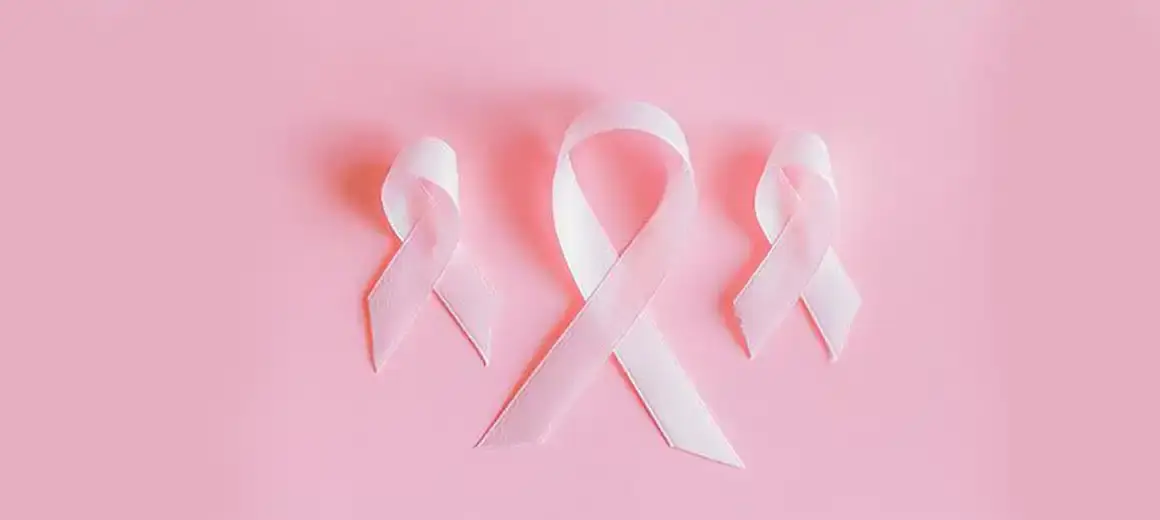A Guide On Breast Cancer And Its Treatment

- November 8, 2021
- by The Ginger-U Team
Cancer occurs when certain changes called mutations take place in genes that regulate cell growth. The mutations let the cells divide and multiply in an uncontrollably. Breast cancer originates in the breast tissue; it occurs when cells in the breast grow and divide unrestrainedly, creating a mass of tissue called a tumor. Like other cancers, breast cancer can also invade and grow into the tissue surrounding the breast. It can also spread to other body parts and form new tumors, a process referred to as metastasis.
The causes of breast cancer are multifactorial. For example, age and weight gain are common risk factors for developing breast cancer, with 66% of breast cancer patients being diagnosed after age 55. Similarly, women with dense breasts, early menarche, genetic predisposition are also susceptible to breast cancer.
What Are The Symptoms Of Breast Cancer?
Some of the most common symptoms of breast cancer include:
- Lump or swelling in the breast. A breast lump or tissue thickening that feels different from surrounding tissue has developed recently.
- A sudden, inexplicable change in the shape or size of the breast
- Changes to the appearance of the skin on the breasts
- Red, bumpy skin over the entire breast
- Breast pain
- Inverted nipple
- A nipple discharge other than breast milk
- Bloody discharge from the nipple
- Peeling, scaling or flaking of skin on the nipple or breast
What are the treatments for breast cancer?
There are several breast cancer treatment options at every stage of breast cancer. Most patients need a combination of two or more treatments. After the medical diagnosis, the doctor will determine the cancer stage. Accordingly, the best treatment options are based on the stage, age, family history, genetic mutation status, and medical history.
Below is a list of standard treatment options for breast cancer:
Surgery: Most people with breast cancer must undergo surgery to remove cancer cells or tumors from the breast and other affected areas. Lumpectomy and mastectomy are the two surgical options, followed by reconstruction. The type of surgery is based on the size and location of the tumor, personal preference, and other factors such as genetic predisposition.
Lumpectomy: In a lumpectomy, the surgeon removes the cancerous cells from the breast. Lumpectomy is possible when cancer is confined to one area of the breast. In a lumpectomy, the patient may go home shortly after the surgery and not need to stay in a hospital overnight.
Mastectomy: A mastectomy is the surgical removal of the entire breast. It is recommended when cancer is found all over the breast. Some patients may need a double or bilateral mastectomy, where both breasts are removed.
Reconstructive: In breast reconstruction surgery, a plastic surgeon uses an artificial implant or a flap of tissue from any other body part to create a breast shape. Breast reconstructive surgery is typically conducted during or after a mastectomy or lumpectomy but can also be done months or years later.
Radiation therapy: It involves high-energy X-rays that kill cancer cells and prevent them from spreading. It is usually recommended in the early stages of breast cancer, after lumpectomy for stage 0 breast cancers. It can be used alongside other treatments and lowers the risk of cancer recurrence. It is typically administered five days per week over five to seven weeks.
Chemotherapy: Chemotherapy treatment involves powerful drugs to kill cancer cells throughout the body. It is used before surgery to decrease the size of a tumor so it can be removed easily or kill remaining cancer cells after surgery. Chemotherapy is also used as a treatment in people with advanced, metastatic breast cancer that has spread throughout the body.
Targeted therapy: It refers to various drugs that enter the bloodstream and treat cancer throughout the body. Targeted therapy drugs aim to attack cancer cells without harming healthy cells and tend to have fewer side effects than chemotherapy drugs. Targeted therapies are often used to treat HER2-positive breast cancers. HER2 is a type of protein on the exterior of breast cells. HER2-positive refers to cancer cells with more HER2 than is expected. HER2-positive breast cancers advance quickly but often respond better to medications that target HER2.
What Should You Do To Prevent Breast Cancer?
Yes! Prevention is always better than cure. So, here are a few ways to heed to minimize the risk of breast cancer.
- Maintain a healthy weight
- Stay physically active
- Avoid smoking and limit alcohol consumption
- Take hormonal birth control only if necessary
- Limit hormonal therapy after menopause
- Check your family's medical history
- Do breast self-examination every month, 3-5 days after your periods
Want to know more health care tips for women? Keep reading this blog.

Comment